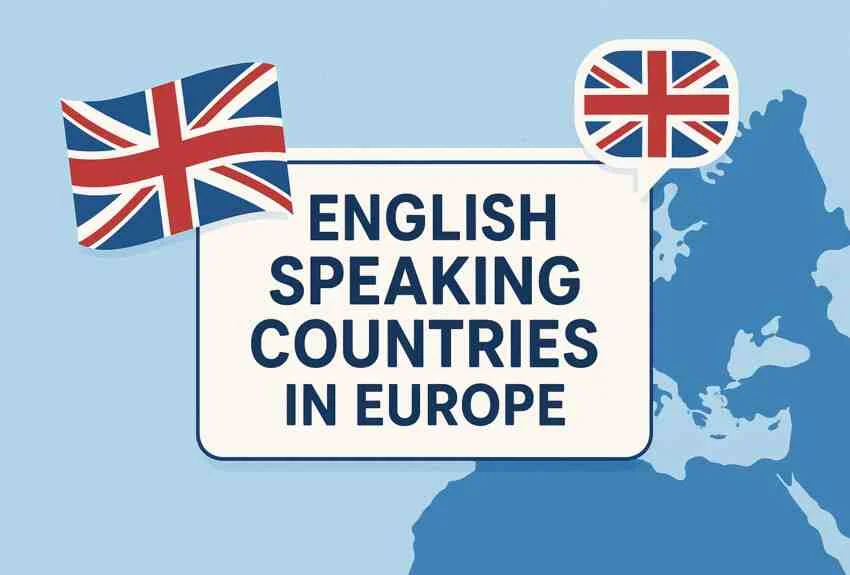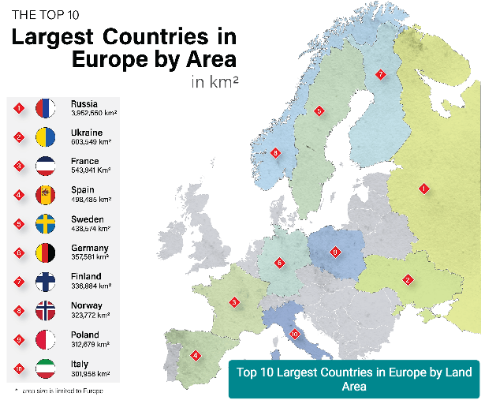Studying in Europe has always been a dream for many international students. Its seen as a continent to seek greener pastures. From its rich cultural heritage to its cutting-edge universities, Europe combines history with modernity in a way no other continent does. But there’s one significant concern that often pops up: the language barrier.
If you’re an international student eyeing Europe for your next big adventure, I’ve got some exciting news: you don’t have to brush up on French, German, or Spanish just yet. Europe is packed with spots where English flows as freely as the coffee in a Parisian café—well, almost. Whether you’re chasing world-class degrees, vibrant student life, or just a chance to explore cobblestone streets without a phrasebook, the English-speaking countries here make it all a breeze.
In this guide, I’ll walk you through the top English-speaking havens in Europe perfect for international students like you. We’ll cover everything from tuition fees and top unis to visa hacks and what to pack for those rainy afternoons. Why Europe? Affordable education compared to the US, diverse cultures, and a post-grad job market that’s the envy of the world. Plus, with English as your ticket in, you’re set to thrive. Let’s dive in—grab your notebook!
Why Choose English-Speaking Countries in Europe for Your Studies?
Picture this: You’re acing lectures in your native tongue, chatting with locals over pints, and building a global network without the language barrier blues. That’s the magic of studying in English-speaking Europe. These countries aren’t just about convenience—they’re hubs of innovation, history, and opportunity. Think cutting-edge research labs in the UK or tech startups in Ireland.
For international students, the perks stack up: scholarships galore, part-time work options, and post-study visas to kickstart your career. But heads up—costs vary wildly, from budget-friendly Malta to premium-priced London. I’ll break it down country by country so you can plot your path. Ready? Starting with the heavy hitter…
Before diving into the list, let’s quickly explore why choose an English-Speaking country in Europe even matters.
- Ease of Communication: Whether you’re ordering food, making friends, or sitting in a lecture hall, English helps you connect seamlessly.
- Academic Accessibility: Many top universities offer programs entirely in English—saving you the stress of mastering a new language before starting your degree.
- Employment Opportunities: Internships, part-time jobs, and even post-graduate opportunities are more accessible in English-speaking environments.
- Cultural Comfort: While you’ll still experience European diversity, being able to communicate fluently eases cultural adaptation.
The List of English-Speaking Countries in Europe for International Students
When we think of English-speaking countries in Europe, a few obvious names pop into mind—like the United Kingdom or Ireland. But there are others that may surprise you, especially when considering high levels of English proficiency among residents. Let’s go country by country.
1. The United Kingdom
Ah, the UK—where Shakespeare penned his masterpieces and modern moguls like Richard Branson got their start. If you’re dreaming of studying in the UK as an international student, you’re in for a treat. English is the official language, so immersion is effortless. From bustling London to the misty Scottish Highlands, this island nation’s got diversity in spades.
Top Universities and Programs
The UK boasts some of the world’s elite unis. Oxford and Cambridge? Legends for humanities and sciences. Imperial College London shines in engineering, while the University of Edinburgh rocks life sciences. For business buffs, London School of Economics (LSE) is unbeatable. Most programs are in English, with over 500,000 international students flocking here annually.
Costs and Funding
Tuition? Expect £10,000–£38,000 per year for undergrads, higher for postgrads. Living costs add £12,000–£15,000 annually, spiking in London. But don’t sweat it—scholaries like Chevening or GREAT Scholarships cover fees for top talents. Part-time gigs (up to 20 hours/week) are fair game on a student visa.
Visa Essentials and Student Life
Snag a Tier 4 visa with your uni offer letter—processing takes about three weeks. Post-study? The Graduate Route visa lets you stick around for two years to job hunt. Life here’s a whirlwind: pub crawls in Manchester, festivals in Edinburgh, and curry houses everywhere. Pro tip: Invest in a good umbrella and an Oyster card for the Tube.
Downsides? High costs and Brexit bureaucracy. But for prestige and networks? Unmatched. If the UK’s calling, start with UCAS applications—deadlines sneak up fast!
2. Ireland
Next up, Ireland—where the Guinness flows, the cliffs inspire, and English is the everyday lingo (with a charming brogue thrown in). It’s a top pick for English-speaking countries in Europe for international students seeking a cozier vibe than the UK’s hustle. Dublin’s tech scene rivals Silicon Valley, and the countryside? Pure poetry.
Top Universities and Programs
Trinity College Dublin is iconic—think Book of Kells and cutting-edge med programs. University College Dublin (UCD) excels in agribusiness and engineering. For artsy souls, University of Galway offers stellar humanities. Over 40,000 internationals study here, with English-taught courses across the board.
Costs and Funding
More wallet-friendly than the UK: Undergrad fees hover at €10,000–€25,000/year for non-EU students. Living expenses? €10,000–€12,000 annually, cheaper outside Dublin. Government scholarships like the International Education Scholarships dole out €10,000 stipends. Work up to 20 hours/week during term—barista jobs in Dublin pay the bills nicely.
Visa Essentials and Student Life
Stamp 2 visa on arrival with your acceptance letter; it’s straightforward. Stay on post-grad with a one-year Stamp 1G for job seeking. Student life? Epic trad music sessions, GAA matches, and hikes in the Wicklow Mountains. Summers mean festivals like Electric Picnic. Watch for the rain, but hey, it keeps the green alive!
Why Ireland? It’s safe, inclusive, and your degree’s recognized worldwide. If you’re into storytelling and stouts, this is home.
3. Malta
Shift gears to Malta—a tiny island nation in the Med where English is an official language alongside Maltese. It’s like Europe’s best-kept secret for international students in English-speaking Europe. Crystal waters, ancient ruins, and beaches? Yes, please. Perfect if you want sun-soaked studies without breaking the bank.
Top Universities and Programs
University of Malta is the star, offering English programs in tourism, IT, and marine biology—fitting for an island vibe. American University of Malta focuses on engineering and business. With a small student body (under 10,000 internationals), classes feel personal.
Costs and Funding
Bargain alert: Tuition €8,000–€12,000/year. Living costs? A steal at €8,000–€10,000 annually—think cheap falafel and beachside flats. Scholarships from the Malta Government cover up to 100% for high achievers. Part-time work (20 hours/week) in hospitality is plentiful.
Visa Essentials and Student Life
Schengen visa for non-EU folks; easy with uni proof. Post-study work permit lasts a year. Dive into festas (village feasts), scuba in Gozo, or clubbing in Paceville. It’s multicultural—Arabs, Brits, Italians mingle freely. Hot tip: Learn a bit of Maltese for bonus points with locals.
Malta’s con? Limited program variety. But for value and vibes? A sunny standout.
4. The Netherlands
Okay, full disclosure: Dutch is official, but the Netherlands feels like an honorary English-speaking spot. Over 90% of locals speak fluent English, and unis offer heaps of programs in it. If you’re after bikes, canals, and innovation, this flat wonderland’s for you—especially for study abroad in English-speaking Europe.
Top Universities and Programs
University of Amsterdam leads in social sciences; Delft excels in tech. Erasmus University Rotterdam is business gold. With 100,000+ internationals, English bachelor’s and master’s abound—think sustainability at Wageningen.
Costs and Funding
Fees: €8,000–€20,000/year for non-EU. Living? €10,000–€14,000, with Amsterdam pricier. Holland Scholarship grants €5,000; uni funds add more. Work 16 hours/week—cafés and internships await.
Visa Essentials and Student Life
MVV residence permit via uni—quick process. One-year Orientation Year visa post-grad. Cycle King’s Day in Amsterdam, hit tulip fields, or chill in Utrecht’s cafés. It’s progressive, green, and oh-so-efficient.
Catch? Housing hunts are fierce. But the quality of life? Top-tier.
Honorable Mentions: Other English-Friendly Spots in Europe
Can’t decide? Peek at these runners-up where English programs thrive:
- Sweden: Unis like Lund offer English courses in design and enviro science. Free for EU, but internationals pay €10,000/year. Stunning nature, high happiness index.
- Denmark: Copenhagen’s got English biz and health programs. Fees €6,000–€16,000; work-friendly visas.
- Cyprus: English official in the south—affordable (€7,000/year) for tourism and law at unis like Cyprus University.
These broaden your options without ditching the English ease.
Pros and Cons of Studying in English-Speaking European Countries
To keep it real, here’s the scoop:
Pros
- Seamless communication—no language classes needed.
- Global recognition of degrees boosts your resume.
- Diverse cultures and travel perks (hello, cheap Ryanair flights!).
- Strong support for internationals: orientation weeks, buddy programs.
Cons
- Higher costs in popular spots like London.
- Competitive admissions—GPA and IELTS matter.
- Weather woes: Gray skies in the UK and Ireland.
- Visa red tape, though manageable.
Weigh ’em, but the upsides usually win.
Tips for International Students Applying to These Countries
Applying abroad? I’ve been there—nerve-wracking but worth it. Here’s my playbook:
- Nail Your English Test: IELTS 6.5+ or TOEFL equivalent is standard. Practice early!
- Research Scholarships: Sites like Studyportals or uni pages list gems. Apply six months ahead.
- Budget Smart: Use Numbeo for cost breakdowns. Factor in health insurance (€300–€500/year).
- Visa Prep: Gather finances proof, accommodation, and TB tests if needed.
- Connect Early: Join Facebook groups for internationals in your target city—insider gold.
- Pack Versatile: Layers for variable weather, adapters for plugs, and snacks for homesick days.
Bonus: Start with a virtual tour on uni websites. It’ll spark that excitement! You can also check our affordable universities for international students or the best European Universities you can study in
Wrapping It Up
So, there you have it—a roadmap to the best English-speaking countries in Europe for international students. From the UK’s prestige to Malta’s sun-kissed shores, each spot offers a unique slice of scholarly heaven. Me? I’d pick Ireland for the craic, but that’s just me. Whatever calls to you, remember: Europe’s not just a study destination—it’s a launchpad for your global story.
What’s your top pick? Drop a comment below—I’d love to hear your dreams (and swap application war stories). If this guide helped, share it with a mate plotting their move. Safe travels, future scholar—you’ve got this!





